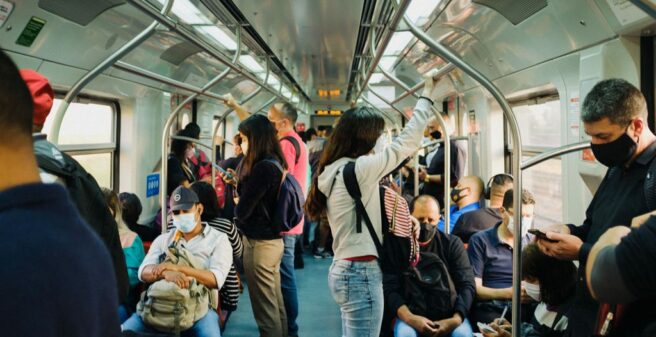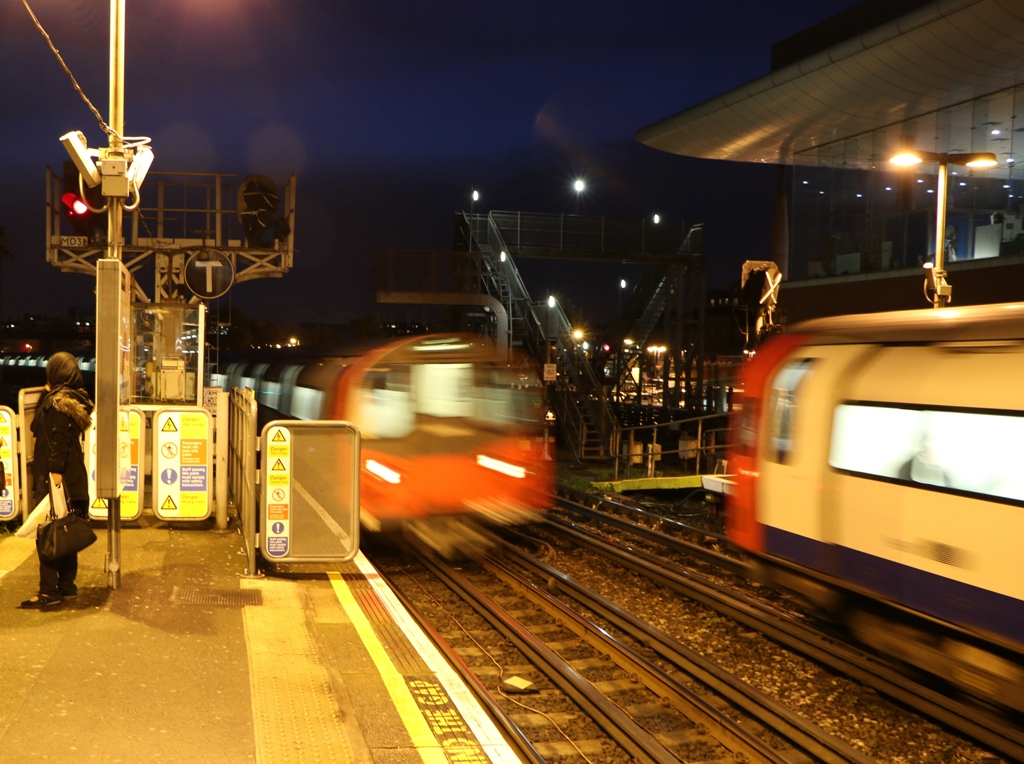
Nick Tasker of Worldline examines the role of integrated transport in empowering social mobility in the post-pandemic world
It goes without saying that people across the world are facing a unique set of economic challenges right now. Rapidly rising prices mean the cost of living has spiralled in recent months, driving many individuals to examine every aspect of their spending to understand where economies can be made.
One area which has perhaps undergone the most significant rise is petrol and diesel prices, with recent research revealing that as much as 40 per cent1 of disposable income among low-income families in the US goes on transport – and this is in a country where fuel prices are traditionally lower than many other western economies.
It is a challenging area for many individuals to make savings. Journeys to work, education, medical appointments and so on are unavoidable and there may not always be a cheaper or more convenient alternative than a private vehicle.
Meanwhile, urban populations continue to grow, with the UN estimating that 68 per cent of the world’s population will be living in urban areas by the year 2050.1
Ensuring a proper infrastructure to support the needs of this burgeoning number of urban dwellers is critical. It is well established that urban areas without a sound and reliable public transport network are significantly less productive than those that do.
The real costs of congestion
By definition, a lack of suitable public transport options will force people into the use of private cars with all the issues this creates in terms of congestion, safety and pollution, notwithstanding efforts towards electrification and the use of other ‘greener’ vehicles.
To give an idea of the impact of more crowded roads, it is estimated that in 2019 – the last full year before the COVID-19 pandemic – the average American lost 99 hours a year as a result of congestion, amounting to a total cost approaching US$88 billion in wasted fuel and productivity. The picture for the UK was even worse, with 115 hours lost annually per driver, with a total cost of £6.9 billion. And this is to say nothing of the environmental and social costs.
Addressing changing working patterns
The pandemic has of course been the catalyst for great change in working patterns, with many companies forced into allowing employees to work from home at least for some of the week – a move which has delivered great benefits in terms of productivity and employee welfare.
But this is not possible for all businesses and organisations, where on-site attendance may be part and parcel of the role. For those organisations operating a ‘hybrid’ working pattern, employees still need to get to and from their workplace on one or more days a week.
Changes in working patterns have created both a challenge and an opportunity when it comes to the delivery of suitable integrated transport systems. While the number of journeys into town and city centres for work, for example, may now be lower than before, transport networks still need to be able to cope and to offer an attractive means to travel. After all, if people are not coming into cities regularly for work, they may do so less frequently for other reasons – although there is some evidence that as COVID-19 restrictions were being eased, public transport journeys for leisure increased alongside a fall in commuter traffic.
Whatever the reason for travel, getting to, from and around cities needs to be a high-quality experience – safe, cost-effective, reliable – and this has to be reflected in the transport options made available.
Accessibility and relevance for all
Policy-makers in this area must also consider the needs of all travellers for all reasons: able-bodied and disabled; business, education and leisure travellers; those who live centrally and those who may live further away and face ‘first mile’ and ‘last mile’ challenges to access public transport links from their homes.
This is a particular issue given the stated desire of many governments globally to maximise possibilities for social mobility. A significant challenge currently exists for families and individuals of more modest financial means if they cannot afford a car, and local public transport options are not suitable to get them to a more lucrative or progressive job outside their immediate area. A region where business cannot secure the required employees because of difficulties in getting to and from work is likely to face difficulties in attracting inward investment.
Challenging perceptions around public transport
There are unfortunately still residual views around the quality and performance of public transport in some areas. Older diesel buses are often seen as dirty, slow, and polluting, as are trains in many cases. Tales of lateness and unreliability are legion. Many people simply do not feel safe on buses – whether that is from unreliability and having to wait alone at bus stops, or from fellow passengers.
Meanwhile, some travellers find bus timetables hard to navigate, and again the issue of ‘will the service turn up’ arises in the mind of a person trying to plan ahead. If services are late, or connections poor or non-existent, making use of a private car is more attractive.
Worldline’s own research reveals that while many travellers would like to be ‘greener’ in terms of their transport choices, that cannot override the need to get to places on time. Practicalities such as convenience and reliability cannot be ignored by policy-makers and planners faced with meeting objectives around sustainability.
The research also revealed that some individuals may be content to use slower services to save money but that this is not true, or even possible, for all.
A further significant challenge is that of cost. Public transport users often face a bewildering array of means to purchase rail tickets in particular, and understandably it is challenging for them to know whether or not they are getting the best deal. In the UK, for example, there are at least a dozen websites where rail tickets can be purchased. This acts as a further discouragement especially when finding the right ticket (peak or off-peak, open or closed return) adds further confusion into the mix.
While perceptions around reliability and sustainability are changing due to greater investment and the use of greener vehicles, this is not an overnight process – and the door-to-door convenience offered by a privately-owned car is something which many people will not be prepared to set aside in a hurry. Being on time for work, school or a medical appointment, for example, is critical and not something which can be jeopardised for the sake of being ‘greener’.
Making public transport attractive
In an ideal world, private car use should be minimised, but policies aimed at supporting Government ambitions for net zero carbon emissions need to go beyond simply making car travel more expensive and difficult. Such measures are likely to have little effect on the financially better-off members of society, while serving to punish those who for whatever reason, still need to use their cars, such as professional carers visiting several homes during their shift.
However, policies need to transcend getting people out of their cars. Not all people can afford them anyway and integrated transport should be geared to ensuring that all individuals can get where they need to, safely and conveniently. Indeed, the approach should focus on public or shared transport being the first choice – not the last resort.
Governments serious about maximising opportunities for social mobility need to rethink policies around transport and consider a move away from models based solely on getting people into and out of city centres.
Users need to be consulted about what they are seeking and these findings fed into the overall model. Regularly reviews would ensure provision is adequate and meets evolving needs.
A region-wide approach, encompassing more than one city and also other destinations such as airports, business parks, and retail parks, would reap dividends in terms of increased take-up of public transport, with the potential for greater social mobility as non-city centre workplaces are more easily accessible. Indeed, this is already proving the case in countries such as Germany and Finland, with the German government recently offering a EURO€9 per month local rail ticket, that proved extremely popular with citizens, driving up use of public transport.
These approaches focus on getting passengers from ‘door to door’, with first and last mile options, such as bikes or scooters, making private car usage less desirable and necessary.
The best-case scenario
But what should such a network deliver? In an ideal world, passengers should be offered a single access point for information and ticketing, enabling them to plan their journeys, and be confident they are getting the best possible price. Information should cover real time detail on services and delays, recommending alternatives wherever possible.
Services must interconnect meaningfully, enabling rapid transit with minimal delays. This ‘Time Promise’ is an important one, and needs to be true at all of hours of the day. The restoration by TfL of London’s night tube service from the end of July is a case in point, enabling rapid travel at all times of the day and night for both workers and leisure travellers reducing the need to resort to private cars.

Services should be accessible to all, irrespective of any disability, while all transport and waiting areas should be clean and safe, ensuring a consistent experience across different means of transport.
Finally, the entire journey process must be considered, with options for first and last mile transit.
A real opportunity
Such an approach will bring its own challenges. Services in cities and regions, as well as nationally, may be run by different bodies with commercial goals. This is especially the case in the UK. But the challenge of multiple providers may also present opportunity, especially with the imminent arrival of Great Britain Railways to replace Network Rail from 2023.
Each of these organisations is likely to be harvesting significant data which, properly harnessed and safely and effectively used, has the potential to inform future decisions and deliver a truly integrated and satisfying customer experience. This in turn will drive up usage and optimise commercial returns. Mandating open data from public and private-transport providers will be the key here.
This type of strategic approach is likely to transcend traditional transport options and move into the area of shared mobility, such as ride-hailing, car-sharing, on-demand responsive micro-transit, shared bikes and scooters, particularly to ensure ‘door to door’ transit.
1 2018 Revision of World Urbanization Prospects produced by the Population Division
29.09.2022
